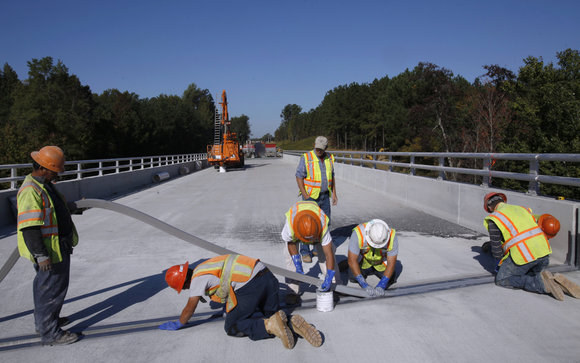NC construction employment was stagnant in five of thirteen metropolitan areas between June 2012 and June 2013, increased in four and declined in four, according to an analysis of federal employment data released by the Associated General Contractors of America. Association officials welcomed increases in construction employment in several US cities but cautioned that demand remained spotty amid continued efforts to cut federal investments in vital infrastructure projects.
Construction employment fell 2 percent (-2,900 jobs) in North Carolina between June 2012 and June 2013.
“Although construction activity remains extremely spotty, with strong residential activity offsetting lackluster private nonresidential investment and shrinking public construction spending, workers are being hired in more metro areas,” said Ken Simonson, the association’s chief economist. “There is widespread good news for some, but the industry remains far below previous employment peaks in most markets.”
The NC metro areas with construction employment increases included: Tidewater-northeastern NC (11 percent, 4,000 jobs), Burlington (4 percent, 100 jobs), Charlotte-Gastonia, Rock Hill (3 percent, 1,100 jobs), Winston-Salem (1 percent, 100 jobs).
Four NC metro areas lost construction jobs in the year-to-year period: Raleigh-Cary (-8 percent, -2,300 jobs), Rocky Mount (-4 percent, -100 jobs), Asheville (-3 percent, -200 jobs) and Wilmington (-1 percent, -100 jobs). Construction Employment was unchanged in Durham-Chapel Hill, Fayetteville, Greensboro-High Point, Greenville and Hickory-Lenoir-Morganton.
Association officials said that despite growing signs of a construction recovery, the industry still faces challenges, including continued efforts to cut federal investments in infrastructure projects. They noted that a Congressional subcommittee voted last week to cut funding for water and wastewater infrastructure by 75 percent for next year, from $2.36 billion in 2013 to $600 million in 2014.
“Beyond the obvious threats to the broader economy, cutting investments in vital infrastructure projects puts some of these new construction jobs at risk,” said Stephen E. Sandherr, the association’s chief executive officer. View construction employment figures by state. Read More.

